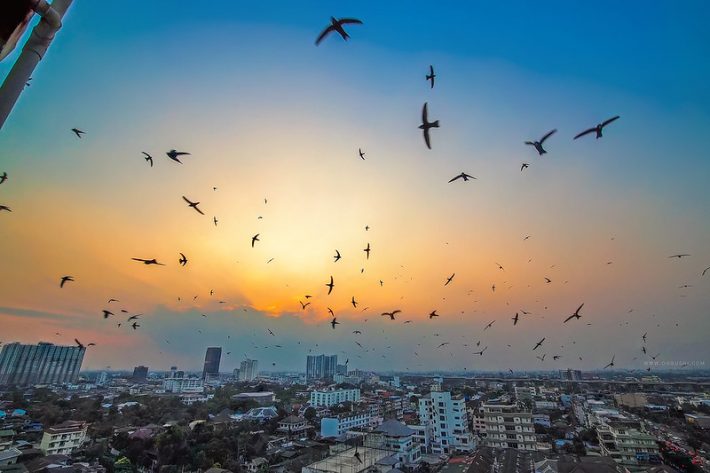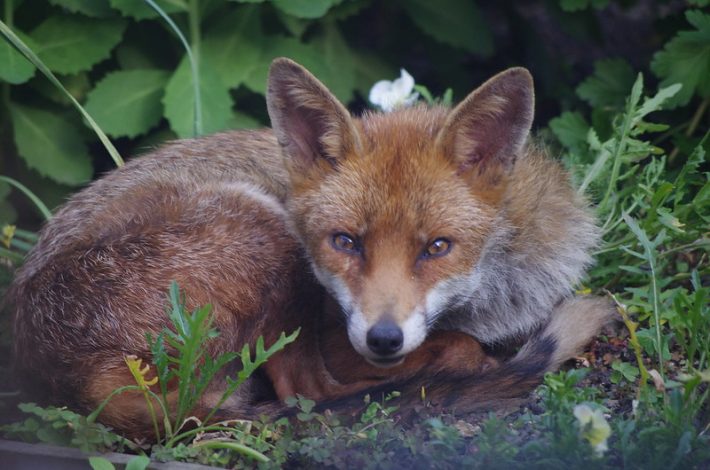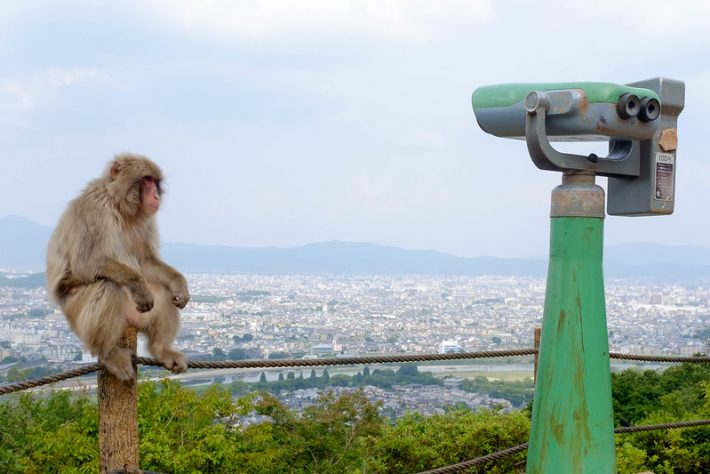How lockdown is changing the ecology of our cities?
With much of the world still under lockdown and people unable to venture far, many of us have been paying more attention to the seemingly more abundant and diverse wildlife on our doorsteps. Rana El-Sabaawi, associate professor of biology at Canada’s University of Victoria considers how our absence is changing the ecology and biodiversity of our cities.

Over the past few months cities around the world have shared similar images of empty streets, makeshift hospitals, commuters wearing masks, and of messages of support for essential workers stuck on windows, doors or drawn on sidewalks.
We have also seen images of animals taking to the empty urban streets. Whether it is the deer in Japan, the goats in Wales, the monkeys in Thailand, or the rats in several cities around the world.
Far less dramatic but equally common is increasing popularity of initiatives, apps, and social media hashtags meant to assist us in identifying flora and fauna in our immediate environments. For many of us observing nature while we shelter in place has become a source of solace, education, and entertainment.
I don’t believe that there has ever been as much public interest in urban biodiversity as there is in this moment. It is therefore not surprising that many of us are wondering about how the lockdown will affect urban biodiversity.
How does urbanisation effect biodiversity?
I like to think of the response to urbanisation as a spectrum between two extremes.
Urban development replaces natural cover with impervious surfaces, fragments habitat into small disconnected patches, generates many kinds of pollutants, changes light and hydrological regimes, and increases the temperature that organisms experience. Cities are hot spots for non-native species, especially ornamental and aquarium species.
I like to think of the response to urbanisation as a spectrum between two extremes. At one end we have species that have no tolerance for urbanisation, and that disappear almost completely from urban areas. They are sensitive to pollution, temperature, or noise. They need green spaces to breed and have strict diet requirements. In older urban ecology literature these species are sometimes called “urbanophobes”.
At the other end you have organisms that do very well in urban environments – the “urbanophiles”. They can nest on buildings, are highly tolerant to pollution, and can eat a wide range of diets, including those provided by humans. You know these animals because you have at some point shooed them out of your home or garden, or fretted about them getting into the garbage or harassing your beloved pet. They are common around the globe – indeed it has been said that cities are more similar to each other than they are to the natural areas around them.

And of course, there are many animals along the spectrum. They might occasionally visit cities for food, but they still need green spaces to breed. They do better in the suburban edges than in city centers.
The effects of lockdown
With some background knowledge, making ecological predictions is relatively easy (and a lot of fun!)
Will our absence from the street make it possible for “urbanophobes” to recover, or for “urbanophiles” to decline? Here are my predictions:
Sadly, I don’t think that the lockdown itself will make it possible for sensitive “urbanophobe” species to recover because their recovery is not possible without changes in infrastructure, legislation, and human attitudes towards protecting biodiversity. Their population might show a small increase if they move into the city from the surrounding natural areas but will likely drop down as soon as lockdowns are lifted.
I predict that the response to the lockdown will be more dramatic for “urbanophile” species. The rats in cities like New York rely on human food waste to survive, and the restaurant closure is a substantial reduction in food waste. Like many urban ecologists I am intrigued by reports of city rats violently competing with each other, resorting to cannibalism, and being bolder. This change in behaviour suggests that they are feeling the effects of the lockdown. Because of the short generation times of these animals, it is not inconceivable that their populations will be affected by the lockdown.
Many of the animals we’ve seen “take over streets” during lockdown are from the middle of the spectrum. Although the evidence is anecdotal, searching for food seems to be motivating their movement into cities, especially for the animals that are fed by tourists. Curiosity, facilitated by lack of traffic, is another potential driver.
Many of these animals (e.g. the goats, the deer) are large and would reproduce relatively slowly (especially compared to a city rat!), so it is not likely that lockdown will affect their populations in a meaningful way. An exception might be animals that have become reliant on tourists for food. Tourism across the world will likely recover more slowly than life within cities.

With some background knowledge, making ecological predictions is relatively easy (and a lot of fun!). In contrast testing ecological and evolutionary hypotheses requires careful data collection and thoughtful analysis.
The lockdown and us
What I find myself contemplating is how and if the lockdown will affect our relationship with urban biodiversity, and if it will make us appreciate it more. Over the past few weeks I have watched the cherry tree outside my window explode into pink frothy petals. I have observed the nuthatches pick at the bark, and the chickadees perform amazing acrobatic feats on the branches. The pink petals have blown away in a spring storm, and green leaves have unfurled in their place. Now there are crows busy building their nests, and the leaves are tattered from the caterpillars.
Watching these small moments of urban nature has been an unexpected source of joy and comfort at a time where I needed them the most. The images of urban biodiversity observed from windows and backyards that have been shared across from across the globe tell me that I am not alone.
Like what we stand for?
Support our mission and help develop the next generation of ecologists by donating to the British Ecological Society.